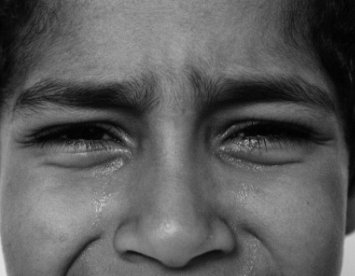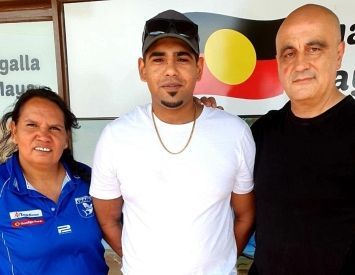I remember a father who found his son hours after his suicide. The father lay his son down and cradled his body through the night until responders arrived in the morning.
*CONTENT WARNING: This article discusses suicide
I remember the distraught family of a young man who only a week before his suicide had run into a burning house and rescued a young mother and her baby. I remember attending the funerals of three young people in the one community: three burials in five days, three graves in a row. The youngest was a 15-year-old girl.
Weeks later the loss of two more young people would make it five graves in a row of youth unlived.
I remember a father of six children who took his life, a mother of five children who took her life, a pregnant mother who took her life. I remember a nine-year-old child who took his life, a 10-year-old child who took her life, an 11-year-old boy who took his life, a 12-year-old girl who took her life.
Suicide is a leading cause of death: one in three deaths of Australians aged 15 to 35 is by suicide. It is the leading cause of death of our children, aged 10 to 17. Understanding suicide prevention should be among the nation’s most pressing issues.
Identifying trauma starts with observations and proceeds with the opportunity for the individual to tell their story. People need people.
Our capacity to listen is an imperative determinant of wellbeing. It must be achieved without judgement, for often redemption is needed: forgiveness in addition to sympathy and empathy. These skills do not come easy but are vital in suicide prevention, trauma counselling, restorative therapies, in mentoring people to be positive their selves.
For all Australians, whether they are the descendants of the First Peoples, newly arrived migrants from culturally diverse backgrounds, or marginalised Australians, there is an accumulation of stress never before had in society. As the stressors pile on, as society is commodified we are losing love. We see this in our parliaments. We cannot continue to accept leadership by hating, blaming, scorn.
We should hear, read the stories of those lost, so others aren’t. Let us be fearless in telling the stories, for in the telling of stories the ways forward will be reinforced.
As a nation we lay claim to responding to the suicide crises. We are one of only a handful of nations with a “suicide prevention plan”. But it’s paper-thin. It’s merely about squeezing more out of services, to work together in prevention and postvention. We are nowhere near it.
Understanding one another, contextualising, understanding unfairness, helping others and being there are profound steps in suicide prevention. We must lead by example.
We must be immutable in shining the light on truth. The nation should weep, and more importantly act, when the vast majority of suicides of persons aged 13 years or less are the children of this continent’s First Peoples.
We do not need endless research to identify elevated risk groups and ways forward. We know them. If we don’t, we discriminate; we leave people behind.
Impoverishment is one of the more significant risk factors for suicidal ideation. Aberrant behaviours and depression are more likely and more pronounced among the impoverished.
The more education one completes, the more "protective" factors one accumulates towards ordered thinking. Almost all of the national prison population did not complete secondary schooling; in fact the majority did not get past year nine.
Child suicide rates are the highest they have ever been and we know bullying is a factor in at least a quarter of them. Child sexual abuse is an abomination prominent in many of the suicides.
A few years ago, I travelled to two island communities that recorded their first suicides. These First Nations islander communities had been sheltered from the internet and social media platforms where bullying and mobbing play out in pronounced ways. Weeks after both islands were connected to the internet, young lives were lost to suicide. Before this, there was no record of suicide attempts.
The death of a child is always heartbreaking but when it is by suicide it is as devastating as it gets, with long-term negative psychosocial effects for those left behind. There is a whole different level of anguish and grief. Grimly, deaths of children by suicide are increasing, but they can be dramatically reduced.
Only in a third of child suicides did the child tell someone that they were contemplating suicide. However, in at least one in four child suicides we have been able to identify bullying as a factor.
The tragedy of 14-year-old Dolly Everett should have galvanised the nation to respond not only to suicides caused by bullying but also to child suicides. In the weeks before and after Dolly’s death there were other children lost to suicide.
Child suicides are no longer rare. Child suicide rates are the highest they have ever been. More than 40,000 children aged 12 to 17 years are known to have made a suicide attempt. One-quarter of 16-year-old-girls self-harm.
Discriminatory, crushing poverty is the catastrophic narrative resulting in an arc of pronounced negative issues culminating in diabolical numbers of First Nations youth and older who are incarcerated, self-harming and killing themselves. The suicide rate of First Nations Australians is two-and-a-half times that of the national population.
In Australia, 14% live below the poverty line but 40% of First Nations Australians live below the poverty line an absolute correlation. In my research, nearly 100% of the suicides of First Nations peoples are of individuals who lived below the poverty line, the highest proportion in crushing poverty, the type not experienced by other Australians living below the poverty line.
The suicide rate of First Nations Australians who live above the poverty line is very low and much lower than the suicide rate of the rest of Australians living above the poverty line.
Our focus needs to be on lifting people out of poverty in one of the world's richest countries.
I have travelled to hundreds of First Nations homelands and communities and a significant proportion are hovels of human misery. They are not of the making of the people living in them but of neglect and deprivations made by one government after another.
In remote living communities, eight out of every ten children will never finish school. These are infrastructure starved communities without hope on the horizon.
Individuated resilience and other psycho-educative strength training, unless coupled with access to opportunities including education and employment, cannot alone score someone to a psychosocial positive self. How far and for how long can someone adjust their behaviour without access to meaningful hope on the horizon?
There must be psychosocial support to help people improve their life circumstances, to reduce disordered thinking and reduce their sense of helplessness. There must be remunerated community buy-in, whether in the remote or in the cities; workforces of mentors who can be guiding lights, shoulders to rest on for the vulnerable.
Like migrants who fled to Australia from socioeconomic disadvantages, First Nations youth that attend to university are among the most driven to succeed. We must do everything that we can to lift sisters and brothers up and they will have to do the rest.
A couple of years ago, I fought to save the life of a six-year-old child, to make sure she never attempted suicide again.
This child is doing well but that was because I was able to travel to her, in the heart of our continent, to one of our remotest regions. I was shocked that one so young would contemplate suicide. At the time I believed, or hoped, that I would never come across again a child so young and suicidal.
There was one island community where a 13-year-old girl took her life. Her 11-year-old brother found her. The island has mainstream services, albeit small, but none visited the family, citing the need to give the grieving family “space”. More than three weeks later, I travelled to the island and drove from the main community to an outstation near a smaller community and met the family. I was the first to do so.
That was six years ago. I helped relocate the family to Darwin, where the children attended school. I visit them every time I am in Darwin.
Long have I called for and argued for substantive outreach, for intense psychosocial support, thorough care and aftercare,
One in 50 Australian deaths is a suicide. This is disastrous. One in 17 First Nations deaths is a suicide. This is an indictment on Australia.
There are many who we have kept alive by someone being there for them, by improving their lives, by validating their trauma and subsequently disabling their trauma. There is no legacy more important than the one that improves the lot of others to the point of saving lives.
I remember everyone lost to suicide but foremost I remember those lost to suicide that we could have helped if we had been resourced to do so.
If you would like to speak to someone about suicide you can call Lifeline on 13 11 14.
Gerry Georgatos is a suicide prevention and poverty researcher with an experiential focus. He is the national coordinator of the National Suicide Prevention & Trauma Recovery Project (NSPTRP). You can follow Gerry on Twitter @GerryGeorgatos.
Related Articles
- To improve mental health systems we must connect with their users
- Telehealth would improve Australia's mental health statistics
- Emma Raducanu's rise to fame highlights dangers of media scrutiny
- NSW mental health crisis grows while Berejiklian plays blame game
- Government ignorant to the seriousness of rural mental health issues
 This work is licensed under a Creative Commons Attribution-NonCommercial-NoDerivs 3.0 Australia License
This work is licensed under a Creative Commons Attribution-NonCommercial-NoDerivs 3.0 Australia License
Support independent journalism Subscribe to IA.















